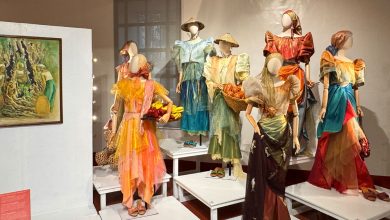MANILA, PHILIPPINES — The Arts Council of Cebu Foundation and Ayala Center Cebu teamed up for the fourth installment of the much-loved Tubô Cebu Art Fair, which happened from September 16 to 18. Since its inception in 2018, Tubô has provided a platform for visual artists, collectors, and enthusiasts in Southern Philippines to interact, educate, and grow in the scene.
Despite setbacks from the Covid-19 pandemic, Tubô persisted in its role as a purveyor of creativity which strives towards more dynamic and empathic fair programs for the regional art community. This year’s “Let’s Play” theme saw artists from Visayas and Mindanao flourish in their element, as they ignited their playful side and engaged in their passions across the week-long celebration.
Delving deeper into Tubô’s mission of fostering collaboration and a healthy creative community that is supportive of each other through art, adobo Magazine sat down with Tubô Cebu Art Fair Curator Jay Nathan Jore, and Arts Council of Cebu Foundation Trustee and Tubô Cebu Art Director Allen Tan.
Congratulations! This year’s fair is equal parts playful, creative, and inclusive. Tell us, why was it important to spotlight regional artists or give them this platform?

Allen: To give context, we felt before that there was no platform for artists in Cebu to showcase their work on a regular basis. There was only VIVA EXCON, a Visayas-wide biennale that travels to a different city each time it’s held. So aside from that, Cebu didn’t have an established art fair.
When Tubô started out in 2018, we felt the need to give artists a chance to showcase their talents. Our goal was to bring them together, give them a venue, and the opportunity to sell their works. In the years since, the art fair has obviously gotten bigger, but our core remains the same—wanting to highlight regional artists and what they do.

Jay: For me as a curator, I’d like to focus on the very concept of Philippine art. So when we say Philippine art, it should be an inclusive description or definition of what Philippine art is.
By lessons that we have on Philippine art in elementary, high school, or basic education, even in college, we know that Philippine art and artists represented in the canon of Philippine art are mostly Manila-based artists. Even our national artists, if you look at the awardees, only a few of them come from the region.
Perhaps through art fairs and activities like Tubô, we can highlight original and regional artists that, in turn, make us more inclusive in the context of Philippine art.

Have you observed any unique trends from the regional artists?
Allen: Yes. With local artists being in touch with what’s happening on-ground here, their work tends to be more topical and rooted in their community. This homegrown work presents value in the way that touches on themes that are closer to the hearts of Visayans.
Jay: For the longest time also, Cebu has been known for its realist works because of artists like Martino Abellana and Romulo Galicano. This has created a kind of brand for Cebuano artists. When they go to Manila to exhibit, they always bring with them the mastery of the classics. This is why, for a time, Cebu art was known to be the equivalent of academic painting, realism, and figurative portraiture.
In recent years, more and more artists have become confident with their work and committed to their craft, not just as a sideline, but as full-time work. So now we see younger artists who explore experimental themes, and innovative, conceptual techniques.
This has somehow changed the landscape. Senior or more established artists now tend to put some abstract elements into their works. You can also see in their brush strokes, they’re trying to be more experimental. Figures are no longer overly polished, unlike before when they were very clean, precise, and crisp.
What’s happening, I think, is that there is now a dialogue between styles. If you look at the works of senior realists, you will see more loose brush works and even unfinished aspects, which were unheard of before. Now they’re very much acceptable. I think the idea is that you can always inject abstractionism, modernization, or whatever it is into traditional forms. Regional artists are experimenting and learning how to play.
Lastly, what can we learn from these regional artists?
Allen: Every time we mount Tubô, we always find surprising things. We come from a viewpoint of being open to new ideas. This year, we worked with so many artists who are exhibiting for the first time, and artists who have been doing it for a long time but, after a while, are rekindling their love for the arts.
There’s always something new, especially with the arts, so we open ourselves to surprise and learning.
Jay: With regional artists, there’s also this kind of sincerity in their work. Because of the lack of gallery systems, art museums, and handlers in the region, there is hardly any formal mechanism or business model for the artists. Of course, they still want to earn, but you’ll notice that regional artists tend to veer away from grand themes and directives that are usually sellable to the mass market. Here, the works are very specific and personal. Pride of place is also a recurring and popular theme. These regional artists don’t just produce art for the sake of selling it. They really love what they do. They want to express an idea and, most importantly, they enjoy the very process of painting and creating art.
adobo Magazine is an official media partner of this event.











sa mga mall like Ayala Malls, or like Zing Mall and Megamall marami art display 🙂